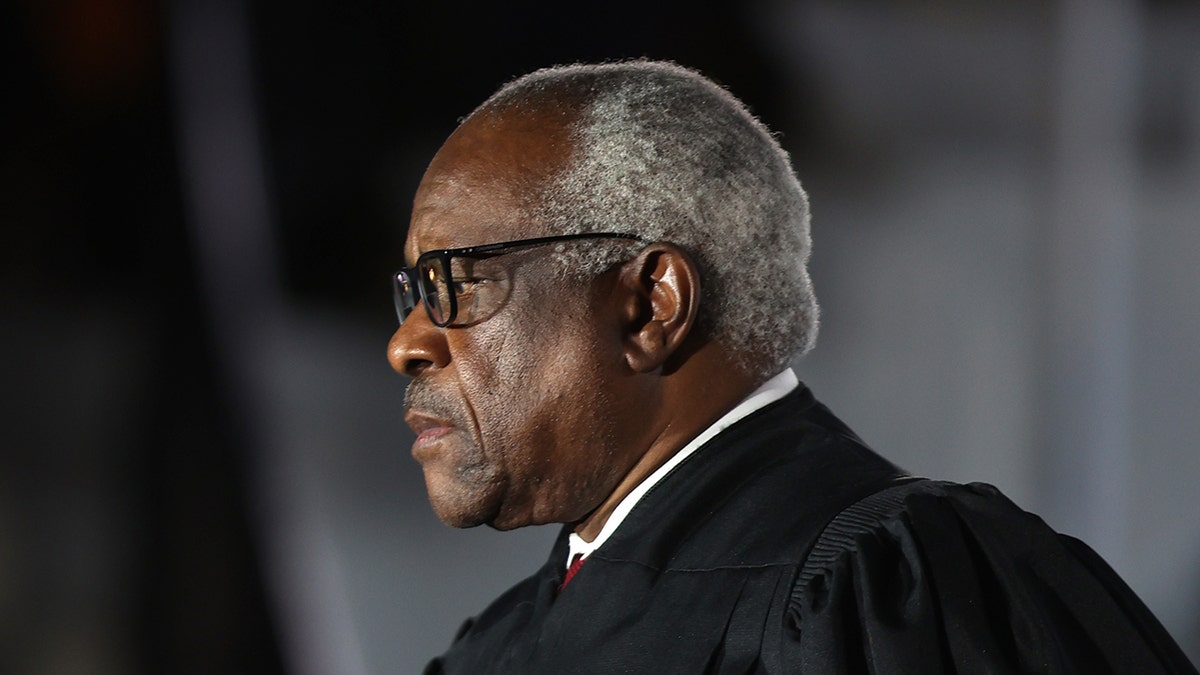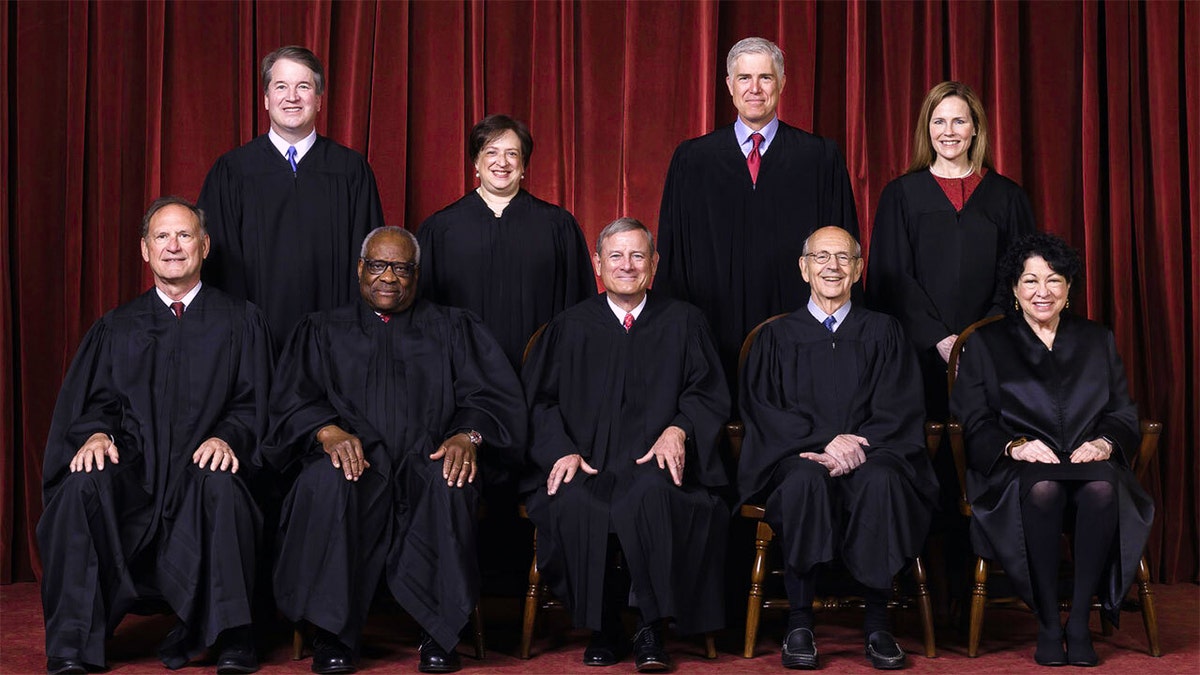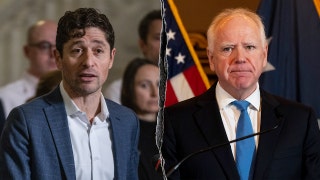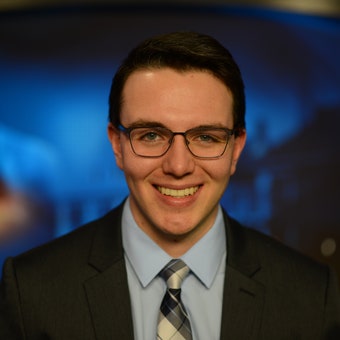The Supreme Court justices returned to in-person oral arguments Monday in a day filled with big questions about how the upcoming term will work, the cases in front of the justices and the future of the court.
When Chief Justice John Roberts gaveled in the new term at 10 a.m., it marked the first time that the justices have been in the same room to hear a case in over a year-and-a-half. Justice Amy Coney Barrett was on the bench for the first time since she was confirmed last year. And Justice Brett Kavanaugh is absent after a positive COVID-19 test last week.
One of the biggest unknowns about the upcoming term was whether Justice Clarence Thomas would stop being an active participant in oral arguments as was the case before the pandemic. The justice made clear his distaste for the freewheeling argument format the court used before the pandemic, which it is largely returning to now that the justices are back in person.
But Thomas on Monday was the first justice to ask questions to a lawyer from Mississippi who argued that Tennessee is essentially stealing groundwater from Mississippi. He challenged the lawyer over the fact Tennessee's pumps do not technically cross the border, but instead draw water from an aquifer that flows between the two states.

Supreme Court Associate Justice Clarence Thomas attends the ceremonial swearing-in ceremony for Amy Coney Barrett to be the U.S. Supreme Court Associate Justice on the South Lawn of the White House October 26, 2020 in Washington, DC. Barrett will be hearing her first in-peron case as a Supreme Court justice Monday, while Thomas will be closely watched for how he handles questioning. (Photo by Tasos Katopodis/Getty Images) (Photo by Tasos Katopodis/Getty Images)
If the case was about a lake on the border between the states, Thomas asked, "Couldn't you argue that it was technically drawing water from Mississippi," based on Mississippi's logic?
The other justices began to jump in soon after Thomas finished his questioning with similarly tough questions.
In the second case of the day, about whether a crime spree fits the definition of a single occasion or multiple occasions under the Armed Career Criminal Act, Thomas referenced Starbucks and Dunkin Donuts. He wondered whether a coffee break between crimes could make the difference between a single occasion or multiple occasions.
The court went to a more structured form of argument during the pandemic to prevent confusion during teleconferences. But recently issued guidance told lawyers to prepare for a flurry of questions from justices and even instances in which the justices might "ask questions before you complete your answer to the first Justice."
Lawyers have two minutes at the top of their arguments to make their points uninterrupted before the free-for-all period starts. But, the guidance adds, "Once an attorney’s time has expired, each Justice will have the opportunity to question that attorney individually."
The hybrid format could present some challenges with Kavanaugh working remotely because he has COVID-19.
"I doubt they’ll change the format at the stage, after having clearly put thought into the structure they want," Cato Institute Director of the Robert A. Levy Center for Constitutional Studies Ilya Shapiro said. "It could be that Justice Kavanaugh will signal Chief Justice Roberts if he wants to get into the scrum, or will just shout into his speaker phone!"

In this April 23, 2021, file photo members of the Supreme Court pose for a group photo at the Supreme Court in Washington. Seated from left are Associate Justice Samuel Alito, Associate Justice Clarence Thomas, Chief Justice John Roberts, Associate Justice Stephen Breyer and Associate Justice Sonia Sotomayor, Standing from left are Associate Justice Brett Kavanaugh, Associate Justice Elena Kagan, Associate Justice Neil Gorsuch and Associate Justice Amy Coney Barrett. Kavanaugh will be missing from the courtroom Monday due to a COVID-19 diagnosis. (Erin Schaff/The New York Times via AP, Pool, File (Erin Schaff/The New York Times via AP, Pool)
Kavanaugh waited until the arguments were well underway before asking the chief justice for a chance to question the Mississippi lawyer. He asked Mississippi to answer concens that a handful of other states brought up in a brief. During the individual questioning period later in Mississippi's presentation, Kavanaugh asked a procudural question regarding how the court should handle the case if Mississippi wins on the merits.
CLICK HERE TO GET THE FOX NEWS APP
While the cases to start the term Monday aren't the most exciting – a groundwater dispute and a question about the definition of a word in a criminal statute – the justices face what Shapiro says could a blockbuster term.
There's a major gun rights case from New York, a second high-profile school choice in three years, and an abortion case out of Mississippi that has the chance to overturn Roe v. Wade, depending on how the justices rule.
And all of this will be happening against the backdrop of calls from progressives for Justice Stephen Breyer to retire, court-packing grumblings from the left, the forthcoming report from President Biden's commission on the court, and the potential that the Senate could change hands in the 2022 midterms.
"This promises to be a bigger term than we’ve had the last few years," Shapiro said. "Buckle up."
Fox News' Bill Mears and Shannon Bream contributed to this report.














































